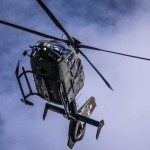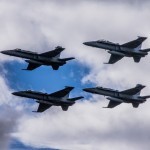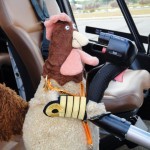
Do you know Rocky?
Rocky is a rooster and has been flying to many places on Earth. Cocks don’t fly?! Yes they do; or at least Rocky does. Continue reading »

Do you know Rocky?
Rocky is a rooster and has been flying to many places on Earth. Cocks don’t fly?! Yes they do; or at least Rocky does. Continue reading »
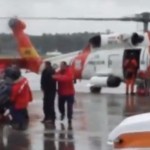
US Coast Guards published an awesome video today. The cameras are installed in the helicopter.
PORTSMOUTH, Va. — The Coast Guard rescued 14 people from life rafts in the Atlantic Ocean approximately 90 miles southeast of Hatteras N.C., Monday, and two remain missing.
The 14 people were flown to Coast Guard Air Station Elizabeth City, N.C., where they were met by awaiting emergency medical services personnel at approximately 10:15 a.m. with no life threatening injuries.
Crews aboard a C-130 Hercules and an MH-60 Jayhawk are searching for the two missing crew members. Crews aboard the Coast Guard Cutter Elm and the Coast Guard Cutter Gallatin are en route to assist with the search.
The vessel is reportedly sunk, but the mast is still visible.
Coast Guard Sector North Carolina initially received a call from the owner of the 180-foot, three mast tall ship, HMS Bounty, saying she had lost communication with the vessel’s crew late Sunday evening.
The Coast Guard 5th District command center in Portsmouth subsequently received a signal from the emergency position indicating radio beacon registered to the Bounty, confirming the distress and position.
An aircrew from Coast Guard Air Station Elizabeth City launched aboard an HC-130 Hercules aircraft, which later arrived on scene and established communications with the Bounty’s crew.
Watchstanders dispatched crews aboard two MH-60 Jayhawk helicopters crew from Coast Guard Air Station Elizabeth City.
The first Jayhawk crew arrived on scene at approximately 6:30 a.m. and hoisted five people into the aircraft, and a second helicopter arrived and rescued nine people.
The 16 people donned cold water survival suits and life jackets before launching in two 25-man lifeboats with canopies.
The vessel was reportedly taking on water and without propulsion. On scene weather was reported to be 40 mph winds and 18-foot seas.
The sunk ship was famous as it was a replica of the HMS Bounty. The 180 ft long (55 m) and three-masted ship was built for the 1962 film Mutiny on the Bounty and was also featured in a Pirates of the Caribbean movie (source).
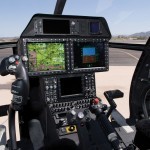
Cockpits of the modern helicopters proposed in the frame of the Armed Scout competition are all mainly composed of screen displays. The era of traditional airspeed indicators, compass or artificial horizon is almost over.
Boeing AH-6i
Equipped with the probably most impressive interface in this competition, Boeing provides a cockpit highly similar to the oncoming Block III of AH-64D Apache.
Boeing says “These displays can be used to present to either crew member the electro-optic/infrared sensor video, engine data, moving map display, armament and identification friend or foe transponder control”
Nothing less than a small Apache! This argument is hard to beat… Nevertheless, we can hope for an improvement of the helmet mounted sight. Ed Macy’s book “Apache” describes the monocle on the pilot’s left eye as causing “terrible headaches as the left and right eye competed for dominance.” He needed “two years to learn how to ‘see’ properly”.
This is clearly not an optimised interface.
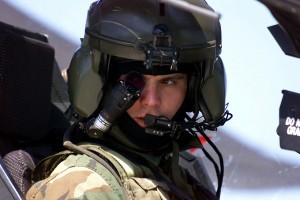
US Army Captain P. Lain Hancock, Commander of C Company, 1st Battalion, 227th Aviation Regiment, 1st Cavalry Division, Texas, looks down from the cockpit of his AH-64D Apache Longbow Helicopter. CPT Hancock is pictured during a refueling and reloading stop at the Dalton/Henson Range Complex at Fort Hood, Texas, during an annual aerial gunnery exercise. (Duplicate image, see also DASD0306784 or search 990915A4980V030)
The displays provide all information necessary to the pilots in flight and on a mission; a complementary helmet mounted sight with flight (and combat?) data may simply be the cherry on the cake.
Eurocopter AAS-72X
Unfortunately, no cockpit picture of the military aircraft has been released yet. We can have a look at the EC-145 instead:
With a sufficient number of screens to display every information needed for a mission flight, the panel looks interesting.
The AAS-72X features a Helionix glass cockpit, accommodating two crew members. The cockpit is equipped with liquid crystal displays, avionics suite and a four-axis autopilot system. The modern avionics include vehicle and engine management display (VEMD). (source)
Helionix is the most modern state of the art of the Eurocopter cockpit. It is fair to expect the best.
However, helmet equipment does not look ready to show off for now. The mount lets expect installation of at least night vision goggles. Standard NVG? Well, it might only be due to current demonstration limitations. In fact, the brand new EC635 is equipped with a Helmet Mounted-Sight Display (HMSD). (source)
It seems very realistic to expect state of the art pilot and gunner helmets with flight and combat symbology. (here the Tiger)
MD540F
Garmin G500 and Elbit Helmet HDTS should be the core of the pilot’s interface. Dealing with equipments off the shelf, MD is ensured to get an aircraft flying well enough, but probably not providing the state of the art of military Human-Machine Interfaces.
Agusta Westland AW139M
No interesting cockpit photo of AW139M were released until today. We can compare the civil (above) and military (below) versions, but unfortunately, no hint is given concerning the mission systems.
It feels like flying a big passenger airplane. In fact, it’s not wrong, the aircraft is first dedicated to passenger transport. Weapons are optional; this helicopter does not look like being optimized for reconnaissance and scouting missions.
Bell OH-58 F (Block II)
Two models and one cockpit are displayed on http://www.scoutsout.com. The only difference will actually be in the engine performance, much greater for the Block II.
So what do we have? A “digital cockpit”!
All information are available to the copilot, even if the helicopter can be flown by a single pilot. Wide displays, safety analog dials, everything’s here but not much more. Furthermore if we believe the picture below, no high-end helmet is available for the pilots.
Conclusion
The most convincing proposals are obviously Boeing and Eurocopter. If you want the best for your troops during the next decades, you will not just afford simple off the shelf equipments. You want modern and highly performing equipments.


The competition to the definition of a new Armed Scout helicopter is in full swing as Bell Helicopter, Boeing and Eurocopter participated in the voluntary flight demonstration. Considering the great number of participants, I think a performance comparison may be helpful.
Two aircraft are not considered in this article, even if already presented earlier: the AVX, based on a twin propeller redesign of the current Kiowa, and the S-97 Raider of Sikorsky, new concept based on the high-speed X2. Because these aircraft have not been flown yet, no actual performance data are available. Therefore, we cannot consider them in the comparison today.
Unfortunately not all values are available for all aircraft, because some of them are still under development and improvement and the manufacturers have not explored the entire flight envelope yet. Nevertheless, we can consider that similar platforms share similar performance, such as a the payload for AH-6i and for MD540F.
Also OH-58D has a useful load of 909 kg and we’ll take it for OH-58F and Block II.
You will notice that Boeing uses the same platform as MD Helicopters, but brought deep modifications. A new tail rotor (similar to AH-64 Apache) or another weapon pylon are the most visible differences, but we will see in a later article that Boeing leads a highly interesting technology development in order to propose a drone option of AH-6i.
Twin-engined aircraft must carry the additional weight of the second engine, but the reliability of the system is increased. You are allowed to lose one engine and continue your flight back to base.
The aircraft of MD Helicopters, Boeing and Bell Helicopter offer a relatively low range (from 260 to 430 km, or 232 nautical miles). Eurocopter and AgustaWestland have a much wider range of respectively 680 km and 950 km (513 nautical miles).
Engine power alone is not significant, we need to relate it to the gross weight (MTOW). Under this conditon, the great winners are the AW139M, AAS-72X and OH-58F Block II. We see here that the exchange of a newer engine for OH-58F provides a competitive advantage.
Unfortunately, we cannot pull the analysis any further with aerodynamical parameters due to their unavailability. (if you have values like the balde chords or the rotor rotation speeds, send them to us !)
In order to obtain a strictly correct analysis of performance in the aerodynamical point of view, we need to determine the rotor solidity ratio. Unfortunately, geometric data of rotors have not been released for all aircraft yet, but this topic will be the object of a future article when possible.
Apparently, Bell’s OH-58 Fs are not the fastest helicopters, even if Vne is not known for now. On the other hand, Eurocopter, MD and Boeing are performing quite well. The helicopter with the top speed is the AW139M providing an impressive 306 km/h (165 kt).
Payload capability is critical as well as agility. Too light aircraft will not have the capability to perform well in a constraining environment while carrying payload. On the other hand, big aircraft will be limited in their agility.
Therefore AW139M is at risk of being considered too huge for the typical mission of an armed scout. 6800 kg are more than twice as much as the other competitors. Military pilots need easy maneuverability in tight spaces, like narrow streets during urban combat or under high voltage power lines.
In order to make a clean comparison, we need to know the fuel tanks capability as well, which are not provided for every aircraft. Therefore, we will have to remind the fact that lightest aircraft have no possibility to carry both weapons and passengers. It will even not be possible to install a third crew member as door gunner.
Based on the perfomance of the aircraft, the best competitor is the Eurocopter AAS-72x, followed by Bell Helicopter OH-58 F Block II. They provide the best power availability, high agility, sufficient cruise speed and an interesting range.
Against the Kiowa, the best assets of AAS-72X are its increased range and the space available in the cabin, making it able to carry passengers, door gunners or a camera or winch operator.
Nevertheless, the Little Bird is famous for the support it provides to the US forces on many combat theatres and the experience provides positive consideration. A future analysis will consider the drone instead of the manned aircraft.
[edited after constructive comments from Mike Hampson, owner of http://helicopterlinks.com/, October 27th, 2012]
50 years of Chinook (official Boeing video)
CH-47F over Afghanistan (as if you too were in the aircraft)
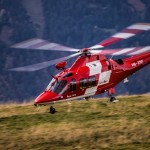
and for the end of this post, a short video featuring the aircraft operating:
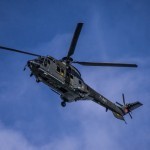
Switzerland flies Cougar AS532 UL. 8 of them were displayed at Axalp 2012.
They also flew on VIP transportation duty, conveying special guests to the high-altitude airshow.
